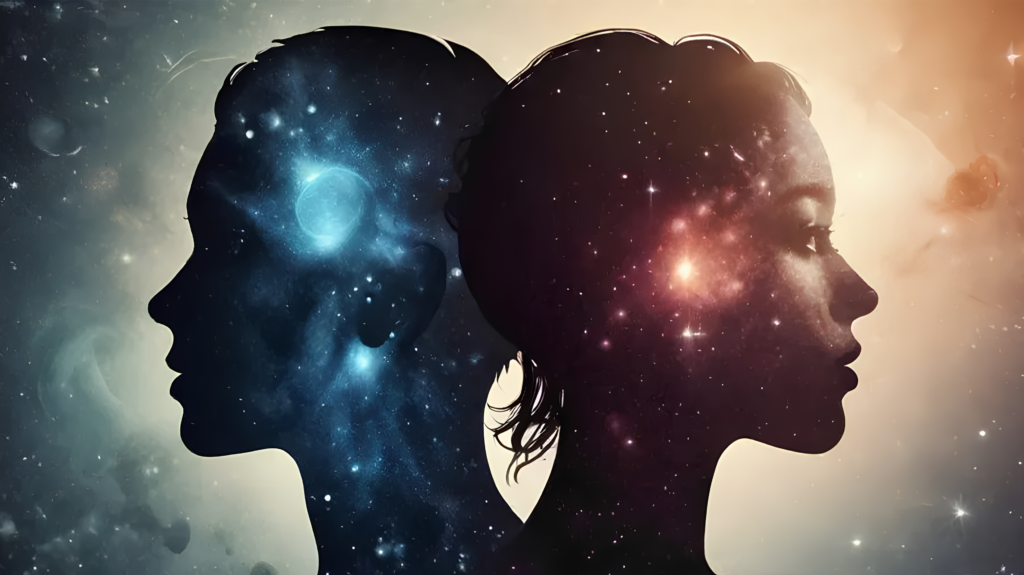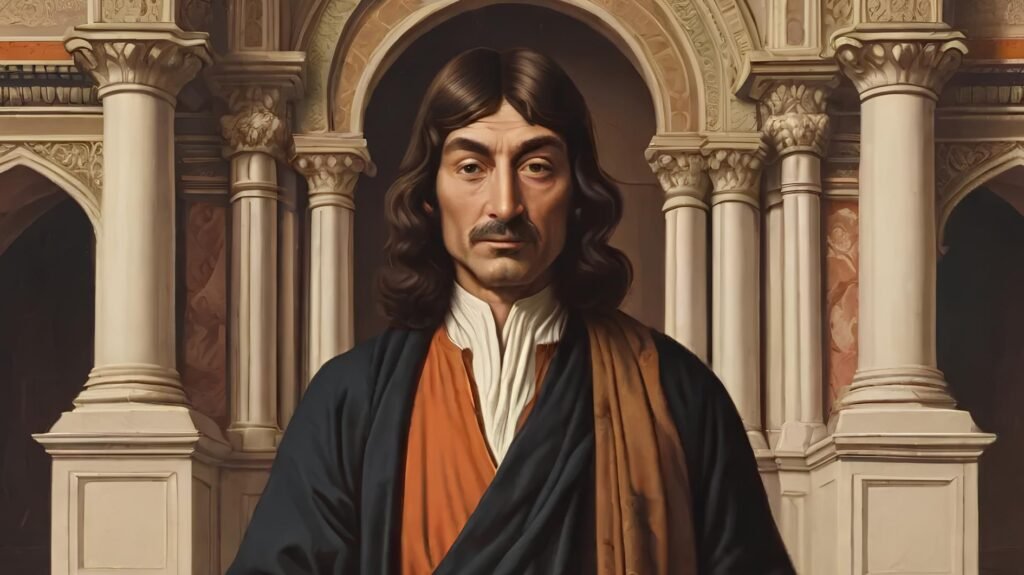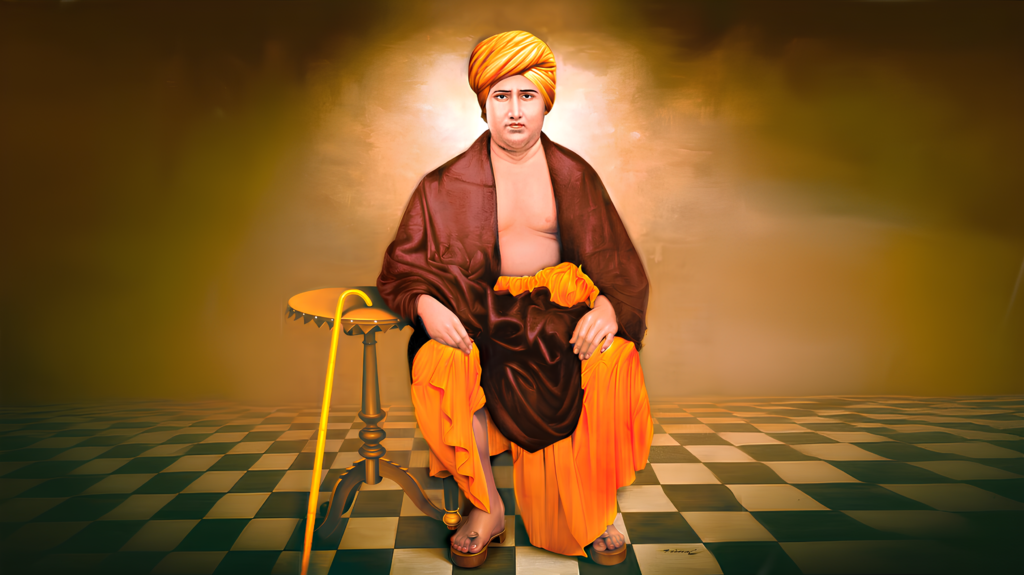What does Purush and Prakriti mean in Hinduism? The Cosmic Duality in Samkhya Philosophy!

Namaste Shiksharthis! In the heart of Hindu philosophy, Samkhya provides a beautiful, logical framework for understanding the world. It explains the interplay between the conscious and the material, between spirit and matter. This interaction of Purusha (consciousness) and Prakriti (nature) creates the universe and everything in it. But how does this process work? In this post, we explore Samkhya’s deep insights into Purusha and Prakriti, and how their interaction shapes reality.
If you want to have a basic understanding of the Samkhya Philosophy, you can read the article here.
The Essence of Purusha and Prakriti
Purusha is the eternal, unchanging, conscious principle. It is pure awareness without any attributes—silent, still, and beyond time. Purusha does not act; it simply witnesses. Each individual has their own Purusha, which remains detached and unaffected by the world.
On the other hand, Prakriti is dynamic and ever-changing. It is the fundamental cause of all material existence. Prakriti is composed of three gunas (qualities) — Sattva (goodness, harmony), Rajas (passion, activity), and Tamas (ignorance, inertia). These qualities combine in different ways to form everything in the physical world.
The tension between Purusha’s pure consciousness and Prakriti’s constant change sets the stage for creation. While Purusha remains still, Prakriti goes through endless cycles of transformation. But why do these two forces interact in the first place?
The Journey of Consciousness: From Unawareness to Awareness
At the heart of Samkhya lies the idea of evolution and involution. Purusha, which is originally pure consciousness, becomes entangled in Prakriti’s creations, leading to the experience of suffering. The process begins with Prakriti forming Buddhi (intellect), the first product of this union. Buddhi is the ability to discern and make decisions, but it is still part of the material realm.
From Buddhi, Ahamkara (ego) emerges. Ahamkara makes us think of ourselves as separate from others, leading to individuality. From this sense of self arise the mind and the senses. The five senses (sight, hearing, taste, smell, and touch) are born out of Ahamkara, allowing us to experience the world.
At this point, Purusha, through the layers of intellect, ego, and senses, becomes completely absorbed in the material world. The challenge, according to Samkhya, is for Purusha to recognize its true nature as pure consciousness and disentangle itself from Prakriti’s creations. This is the journey of self-awareness—of realizing that we are not the mind, body, or senses, but something far deeper.
The Three Gunas of Prakriti
As we dive deeper into Samkhya, the concept of gunas becomes crucial. Sattva, Rajas, and Tamas are the building blocks of Prakriti. They influence everything in the universe, including our thoughts, actions, and experiences.
Sattva is associated with purity, wisdom, and calmness. It brings clarity and insight, and in moments dominated by Sattva, we feel peaceful and content.
Rajas represents energy, passion, and activity. It drives us to act and achieve but also brings attachment and desire.
Tamas is inertia, ignorance, and darkness. When Tamas predominates, we feel lazy, confused, and disconnected. In every moment, these three gunas are at play. For most of us, life is a constant fluctuation between these qualities, with Rajas and Tamas often pulling us into suffering. The path to liberation in Samkhya involves increasing Sattva, reducing Rajas and Tamas, and ultimately going beyond the gunas altogether.
If you want to learn Samkhya Darshan in detail, then you can enroll in our Samkhya Darshan Course.
The Path to Liberation: Understanding Kaivalya
The ultimate goal in Samkhya Philosophy is Kaivalya, or liberation. This occurs when Purusha recognizes its distinction from Prakriti and withdraws from identification with the material world. When Purusha fully realizes its true nature as pure consciousness, it no longer experiences the pleasures and pains of life. It becomes free from the cycles of birth and death, existing in a state of eternal bliss.
Liberation in Samkhya is not about destroying the world or escaping from it; it is about understanding that Purusha and Prakriti are separate entities. Once this realization occurs, Prakriti’s influence over Purusha ceases, and Purusha returns to its natural state of pure, undisturbed awareness.
Conclusion: The Path to Liberation
Samkhya philosophy provides a profound understanding of the human condition. It teaches that suffering arises because Purusha mistakenly identifies with Prakriti’s creations—our thoughts, emotions, bodies, and the world around us. However, through wisdom and self-awareness, we can realize our true nature as pure consciousness, separate from the material world.
The ultimate goal of Samkhya is Kaivalya—complete liberation. This occurs when Purusha fully detaches from Prakriti and realizes its true self. At this stage, Purusha no longer experiences suffering or pleasure; it rests in its own pure awareness. Prakriti, having completed its role, also returns to a state of rest.
Samkhya’s wisdom offers us a path to inner peace and self-realization. By understanding the interplay of Purusha and Prakriti, we can begin to untangle ourselves from the material world and move towards spiritual freedom.
If you want to learn Samkhya Darshan in detail, then you can enroll in our Samkhya Darshan Course.


